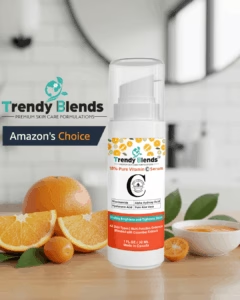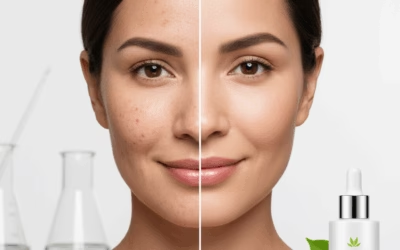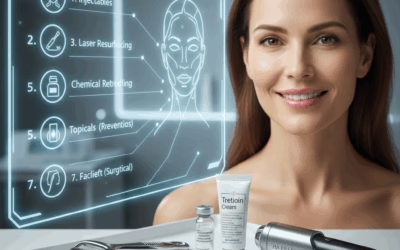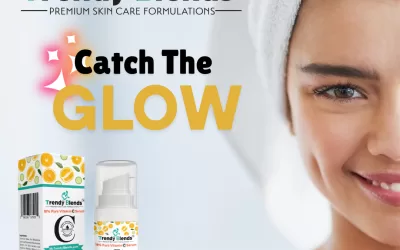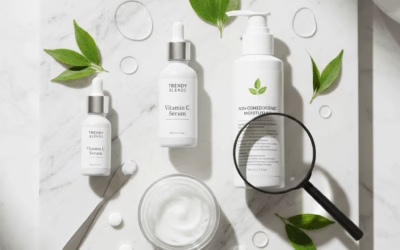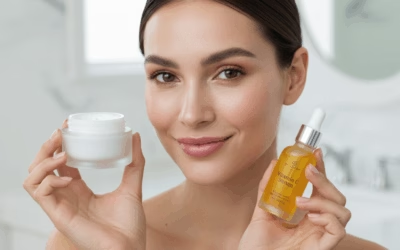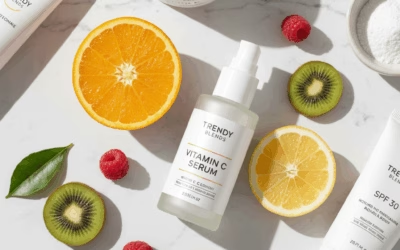7 Proven Ingredients & Strategies for Clear Skin Dark Spot remover for face.

Table of Contents
Introduction: Understanding the Quest for Clear Skin
If you’re searching for the best dark spot remover for face, you are far from alone. Hyperpigmentation—the medical term for dark spots—is one of the most common and frustrating skin concerns, affecting millions worldwide. These spots, whether they manifest as freckles, sunspots (lentigines), post-acne marks (post-inflammatory hyperpigmentation or PIH), or large patches (melasma), are a direct result of excess melanin production.
Finding a reliable dark spot remover for face can feel overwhelming due to the plethora of products available. Using the right dark spot remover for face can transform your complexion.
Incorporating a dark spot remover for face into your skincare routine can lead to significant improvements over time. Keep reading to learn more about the best dark spot remover for face options available today. Experience the benefits of a quality dark spot remover for face and reclaim your confidence.
While hyperpigmentation is a natural response to various triggers, it can make the skin appear uneven, dull, and prematurely aged. The good news is that the science of dark spot remover for face products has advanced dramatically, offering a powerful arsenal of ingredients and treatments to lighten, brighten, and restore an even-toned complexion. Achieving this clear skin requires more than just a single product; it demands a strategic, multi-step approach that combines potent active ingredients with non-negotiable sun protection.
This definitive 2,000+ word guide will serve as your comprehensive roadmap. We will delve into the science of melanin, meticulously analyze the gold-standard and cutting-edge active ingredients, provide clear instructions on how to incorporate these products into your routine safely, and detail the advanced in-office procedures recommended by dermatologists for the most stubborn pigmentation.
Find an effective dark spot remover for face to achieve the skin of your dreams. Many consumers swear by their chosen dark spot remover for face for its effectiveness. With the right dark spot remover for face, you can achieve noticeable improvements. Always choose a reputable dark spot remover for face to ensure safety and efficacy.
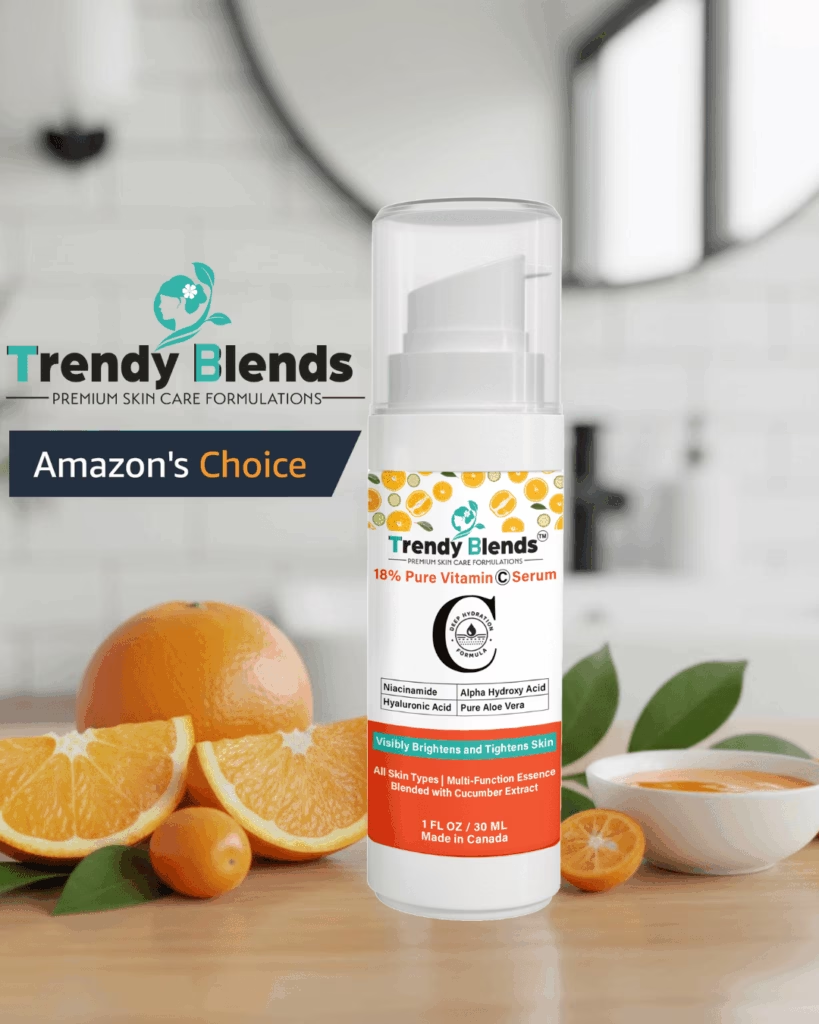
Goodbye hyperpigmentation, hello glow! Stop covering up and start correcting. Get the powerful serum that targets dark spots, acne marks, and melasma fast. Click to shop and see the difference in 7 days!

Consulting with a dermatologist can help you choose the most effective dark spot remover for face based on your skin type. To maximize results, consider using a dark spot remover for face in conjunction with a good sunscreen. Invest in a quality dark spot remover for face to enhance your skincare routine. Achieving clear skin can be easier with the right dark spot remover for face tailored to your needs. Pair your chosen dark spot remover for face with a consistent skincare routine for best results. Review user feedback to choose a popular dark spot remover for face that has proven results.
The Science Behind the Spot: What Causes Hyperpigmentation?

Many users find that a dark spot remover for face can produce visible results within weeks.
Before selecting a dark spot remover for face, you must understand the cause. All hyperpigmentation traces back to the melanocyte, a cell in the skin’s basal layer responsible for producing melanin, the pigment that gives skin its color.
Your skin deserves the best dark spot remover for face to maintain its health.
Explore the available options for a potent dark spot remover for face to suit your needs.
Consulting with professionals may help you select the best dark spot remover for face.
When a melanocyte is triggered, it goes into overdrive, depositing excess melanin into the surrounding skin cells (keratinocytes). This results in the noticeable dark patches we seek to remove. The triggers for this overproduction fall into three primary categories:
Using a dark spot remover for face can significantly improve your skin’s appearance.
Consider a dark spot remover for face that contains proven ingredients for best results.
If you struggle with melasma, a targeted dark spot remover for face can help.
Try to find a dark spot remover for face that is suitable for your skin type.
For optimal results, consider layering your dark spot remover for face with other treatments.
Incorporate a dark spot remover for face into your evening skincare routine for enhanced efficacy.
1. Ultraviolet (UV) Exposure (Sunspots/Lentigines)
This is the number one cause. UV radiation causes DNA damage, which the skin interprets as an injury, triggering melanocytes to produce melanin as a protective shield. Cumulative sun exposure leads to visible sunspots, often called “age spots” or “liver spots,” which are typically isolated and well-defined.
Using a dark spot remover for face should be part of a broader skincare strategy.
2. Inflammation and Trauma (Post-Inflammatory Hyperpigmentation – PIH)
When the skin experiences trauma—such as acne, burns, scratches, insect bites, or aggressive procedures—the resulting inflammation stimulates melanocytes. Once the injury heals, a dark mark (PIH) often remains. PIH is more common and often more persistent in medium to deeper skin tones.
Seek out innovative formulations in a dark spot remover for face to address your specific concerns.
3. Hormones (Melasma)
Melasma is a chronic pigmentation disorder, often appearing as symmetric, blotchy patches on the cheeks, forehead, and upper lip. It is primarily driven by hormonal fluctuations (pregnancy, birth control pills, hormone replacement therapy) combined with sun exposure. Because melasma involves deeper layers of the skin, it is notoriously challenging to treat and manage.
A truly effective dark spot remover for face works by targeting the melanin production process at multiple points: inhibiting the enzyme that creates melanin, speeding up the turnover of pigmented skin cells, and protecting the skin from future triggers.
Take the time to discover what works best for you in a dark spot remover for face.
Section I: The Pillars of Dark Spot Removal: Essential Active Ingredients
The best strategies for fading dark spots rely on combining ingredients that perform three critical functions: Tyrosinase Inhibition, Accelerated Cell Turnover, and Antioxidant Protection.
A. Tyrosinase Inhibitors: Stopping Melanin Production
Each skin type may require different approaches in a dark spot remover for face selection.
Whether it’s a serum or cream, find a dark spot remover for face that suits your lifestyle.
Consider how often you can use a dark spot remover for face to maintain results.
Tyrosinase is the key enzyme required for the synthesis of melanin. Ingredients that inhibit tyrosinase are the most direct and potent dark spot remover for face agents.
1. Hydroquinone (HQ): The Gold Standard
- Mechanism: Hydroquinone is arguably the most effective skin-lightening agent available. It works by directly inhibiting the tyrosinase enzyme and, in higher concentrations, is thought to damage the melanocytes themselves.
- Concentration & Availability: It is available over-the-counter (OTC) in concentrations up to 2% and by prescription at 4% and higher.
- Usage Cautions: HQ is potent and must be used strategically. Dermatologists recommend a cycling protocol (e.g., four months on, two months off) to mitigate the rare, but serious, risk of exogenous ochronosis (a permanent blue-black darkening of the skin). It should also never be mixed or layered with benzoyl peroxide, as this can cause temporary brown staining. Consultation with a doctor is mandatory for prescription-strength use.
2. Tranexamic Acid (TXA): The Melasma Specialist
- Mechanism: TXA is a relative newcomer to topical skincare that has proven highly effective, particularly for treating melasma. It works by interrupting the interaction between keratinocytes and melanocytes, calming the excessive communication that signals melanin production, especially after UV exposure or inflammation.
- Formulations: Found in serums and creams, often in concentrations of 2%–5%. It is exceptionally well-tolerated and compatible with most other actives.
3. Kojic Acid
- Mechanism: Derived from fungi, kojic acid directly chelates copper at the active site of the tyrosinase enzyme, preventing it from functioning.
- Benefits: It is gentle yet effective, often formulated alongside other inhibitors like hydroquinone or Vitamin C.
4. Azelaic Acid
- Mechanism: Derived from grains, azelaic acid is a triple-threat: it fights acne (anti-bacterial), calms redness (anti-inflammatory), and inhibits tyrosinase.
- Benefits: It is one of the few tyrosinase inhibitors considered safe for use during pregnancy (consult your doctor). It is excellent for PIH (post-inflammatory hyperpigmentation) related to acne and is generally well-tolerated by sensitive skin.
5. Licorice Root Extract (Glabridin)
- Mechanism: Licorice root extract contains glabridin, a potent compound that effectively inhibits tyrosinase and provides anti-inflammatory benefits, making it an excellent gentler alternative for sensitive skin types.
6. Niacinamide (Vitamin B3)
- Mechanism: Niacinamide does not inhibit tyrosinase directly. Instead, it prevents the transfer of melanin-containing packages (melanosomes) from the melanocyte to the surrounding skin cells (keratinocytes). If the pigment can’t reach the surface, the dark spot won’t be visible.
- Benefits: It also strengthens the skin barrier and reduces inflammation, making it an ideal complementary ingredient in any dark spot remover for face formula. Effective concentrations typically range from 2% to 10%.
B. Accelerated Cell Turnover (Exfoliators and Retinoids)
Melanin is contained within skin cells. By increasing the rate at which old, pigmented cells shed and new, unpigmented cells rise to the surface, you physically remove the dark spot over time.
7. Retinoids (Retinol, Tretinoin, Retinaldehyde)
- Mechanism: Retinoids are Vitamin A derivatives that significantly speed up skin cell turnover. This rapid exfoliation pushes the pigmented cells out faster. Prescription-strength Tretinoin (Retin-A) is the most potent and best-studied retinoid for treating hyperpigmentation, often paired with hydroquinone in the famous Triple Combination Therapy (TCT).
- Usage Cautions: Retinoids cause increased sun sensitivity, dryness, peeling, and irritation (the “retinization” phase). They must be applied only at night, followed by rigorous use of SPF every morning. Retinoids are contraindicated during pregnancy and breastfeeding.
8. Alpha Hydroxy Acids (AHAs)
- Mechanism: AHAs, such as glycolic acid and lactic acid, gently dissolve the glue that holds dead skin cells together (desmosomes), allowing them to slough off and revealing brighter, clearer skin underneath.
- Usage: Glycolic acid is the smallest AHA, penetrating deepest and offering the strongest exfoliation, while lactic acid is larger and hydrating, making it better for sensitive or dry skin. AHAs are effective for mild sun damage and improving overall skin texture.
C. Antioxidants: Brightening and Protection
Antioxidants counteract free radical damage caused by UV and pollution, which is a major trigger for melanin production. They also often possess inherent brightening properties.
9. Vitamin C Serum (Ascorbic Acid)
- Mechanism: Vitamin C Serum (specifically L-Ascorbic Acid) is a powerful antioxidant that neutralizes free radicals and has a proven melanin-inhibiting effect. It brightens the skin by reducing oxidative damage and interfering with the production of melanin.
- Formulations: Look for stable derivatives (like Ascorbyl Glucoside or THD Ascorbate) or L-Ascorbic Acid formulated with Ferulic Acid and Vitamin E (the classic trio) for maximum stability and efficacy. Vitamin C should be applied in the morning to maximize its protection against daily environmental stressors.
10. Turmeric and Resveratrol
- Mechanism: Both are potent natural antioxidants. Turmeric, containing Curcumin, is noted for its powerful anti-inflammatory and antioxidant properties, helping to prevent the environmental triggers that initiate new pigmentation. Resveratrol, found in grapes, also offers strong protection against oxidative stress.
Section II: Strategizing Your Routine: Combining and Layering Dark Spot Removers
The secret to a successful dark spot remover for face routine lies in smart layering and cycling. You rarely use all potent ingredients simultaneously.
A. The Gold Standard: Triple Combination Therapy (TCT)
For stubborn, medically diagnosed pigmentation like melasma, dermatologists often prescribe a Triple Combination Therapy (TCT), also known as Kligman’s Formula, which combines three powerhouse agents:
- Hydroquinone (HQ): To inhibit melanin production.
- A Retinoid (Tretinoin): To accelerate cell turnover.
- A Topical Corticosteroid: To reduce the inflammation and irritation caused by the other two ingredients, which is critical since inflammation can worsen pigmentation.
TCT is an advanced treatment that requires strict medical supervision and adherence to the usage cycle.
B. Safe Skincare Layering for OTC Actives
For over-the-counter routines using acids, retinoids, and Vitamin C, follow these general rules to avoid irritation and maximize results:
| Time of Day | Step | Recommended Dark Spot Removers | Why? |
|---|---|---|---|
| Morning (A.M.) | 1. Cleanser | Gentle, non-stripping cleanser. | Prep the skin. |
| Morning (A.M.) | 2. Antioxidant/Brightener | Vitamin C Serum (10-20%) or Tranexamic Acid. | Provides antioxidant protection against UV/pollution and brightens skin. |
| Morning (A.M.) | 3. Sun Protection | Broad-Spectrum SPF 30 or higher (MANDATORY). | The most critical step. Prevents new spots and stops existing spots from darkening. |
| Evening (P.M.) | 1. Cleanser | Remove makeup and impurities. | Clean slate for active penetration. |
| Evening (P.M.) | 2. Exfoliator/Inhibitor | Retinol, Azelaic Acid, Kojic Acid, or HQ (if cycling). | These ingredients work overnight to speed up turnover or inhibit pigment. |
| Evening (P.M.) | 3. Moisturizer | Hydrating cream with ceramides or hyaluronic acid. | Mitigates the common dryness/flaking caused by retinoids and strong acids. |
The Golden Rule of Actives:
Do not layer high concentrations of Vitamin C and Retinoids/AHAs in the same routine, especially when first starting. This leads to over-exfoliation, irritation, and potentially worsening your hyperpigmentation (PIH). Alternate them instead: Vitamin C in the morning, Retinol on alternate nights, and AHAs on the other nights.
C. Safety and Contraindications
When using any potent dark spot remover for face, heed these warnings:
- Patch Test: Always test a new active product on a small, discreet area of skin for 24-48 hours before full facial application.
- Sunscreen is Non-Negotiable: Any product designed to lighten skin makes it more vulnerable to sun damage. If you skip SPF, you will be making your dark spots worse.
- Pregnancy and Breastfeeding: Avoid all retinoids (including Tretinoin and high-dose Retinol) and Hydroquinone. Safe alternatives often include Azelaic Acid, Vitamin C, and Niacinamide (always consult your physician).
Section III: Dermatologist-Recommended In-Office Procedures
For pigmentation that does not respond adequately to a prescription-grade dark spot remover for face or when rapid improvement is desired, professional in-office treatments offer deeper, targeted solutions.
A. Chemical Peels
Chemical peels use concentrated acids to remove damaged, pigmented layers of the skin, forcing skin regeneration and allowing new, unpigmented cells to emerge.
| Peel Type | Target/Depth | Suitable For | Key Considerations |
|---|---|---|---|
| Alpha Hydroxy Acid (AHA) | Superficial | Mild sun damage, improving texture. | Minimal downtime; best for mild cases. |
| Salicylic Acid (BHA) | Superficial/Medium | Acne-related PIH (Post-Inflammatory Hyperpigmentation). | Lipophilic (oil-soluble), excellent for oily/acne-prone skin. |
| Trichloroacetic Acid (TCA) | Medium/Deep | Stubborn sunspots, severe PIH, or deeper texture issues. | Requires significant downtime (up to 7-10 days of peeling). |
| Depigmenting Peels (e.g., Cosmelan) | Specialized | Melasma and resistant hyperpigmentation. | A multi-phase treatment involving an in-office mask followed by rigorous at-home cream application for months. Highly effective for melasma. |
B. Laser and Light Therapy
Laser treatments break down the excess melanin pigment into smaller particles that the body’s immune system can clear away.
- Q-Switched and PicoWay Lasers: These are often the first line of defense for sunspots. They deliver energy in incredibly fast bursts (picoseconds) to shatter the pigment while minimizing heat damage to the surrounding tissue, which is crucial for preventing PIH.
- Fractional Lasers (e.g., Fraxel): These lasers create microscopic columns of injury in the skin, which stimulates collagen and pushes up pigmented cells. They are highly effective for melasma and PIH but must be used carefully, especially on darker skin tones, to avoid inducing more PIH.
- Nd:YAG 1064nm Laser: This specific wavelength is safer for medium to deep skin tones, as it penetrates deeper to target pigment without excessively heating the surface, significantly reducing the risk of post-treatment inflammation and darkening.
C. Microneedling
Microneedling creates controlled micro-injuries in the skin, initiating a healing response. When combined with specialized depigmenting serums (like those containing Vitamin C or Tranexamic Acid), the physical needling process and the infused serums work synergistically to reduce pigment and improve texture. This procedure must be done professionally to ensure sterility and proper technique.
Section IV: Prevention: The Foundation of Any Dark Spot Remover Strategy
No dark spot remover for face can truly solve your problem if you neglect prevention. Think of the active ingredients as the repair crew, and sunscreen as the security system that prevents future breaches.
The Power of Broad-Spectrum SPF 30+
The single most important step in treating and preventing hyperpigmentation is the diligent, daily use of broad-spectrum sunscreen with an SPF of 30 or higher.
- Broad-Spectrum Protection: Ensures you are protected against both UVA rays (which cause photoaging and pigmentation) and UVB rays (which cause sunburn).
- Reapplication: Apply generously as the last step of your morning skincare routine, 15 minutes before sun exposure, and reapply every two hours when outdoors.
- Physical (Mineral) Sunscreens: Dermatologists often prefer physical blockers (containing Zinc Oxide and/or Titanium Dioxide) for hyperpigmentation-prone skin, especially melasma. They work by physically sitting on the skin and deflecting UV light, offering a slightly better protective barrier against visible light and heat, which can also trigger melanin production.
Lifestyle Adjustments
For managing chronic conditions like melasma, topical treatments are only half the story.
- Heat Reduction: Minimize heat exposure, as heat can trigger melasma. This includes hot tubs, saunas, and prolonged, intense exercise.
- Hormonal Awareness: If you suspect birth control or hormone therapy is fueling your melasma, discuss alternative options with your physician.
- Protection Beyond Sunscreen: Wear wide-brimmed hats and sunglasses whenever you are going to be outdoors for extended periods, even on cloudy days.
Conclusion: Crafting Your Personalized Dark Spot Remover Action Plan (2,000+ Words)
Tackling hyperpigmentation requires patience, consistency, and a well-informed strategy. The best dark spot remover for face is not one single product but a carefully selected combination of actives designed to inhibit new pigment while shedding existing marks, all grounded in vigilant sun protection.
To successfully fade dark spots, remember this action plan:
- Identify Your Spot: Determine if you are dealing with sun damage, PIH, or the more complex melasma, as this guides your choice of active ingredients (e.g., Tranexamic Acid excels for melasma, while Retinoids and AHAs are fantastic for PIH and general sunspots).
- Start Low and Go Slow: Introduce powerful actives like retinoids and high-percentage acids one at a time and gradually increase frequency to minimize irritation and prevent post-inflammatory hyperpigmentation.
- Use Strategic Combinations: Build a routine that pairs a morning antioxidant (like Vitamin C) with an evening cell turnover agent (like Retinol or Azelaic Acid).
- Prioritize SPF: Make broad-spectrum sunscreen your daily, year-round best friend. No exceptions.
- Know When to Call a Professional: If you’ve consistently used OTC products for 3-6 months with minimal results, or if your pigmentation is identified as melasma, it’s time to book a consultation with a board-certified dermatologist to discuss prescription options like Hydroquinone and TCT, or in-office procedures like specialized peels and lasers.
With consistent effort and the right science-backed ingredients, achieving a visibly clearer, more radiant, and even-toned complexion is an attainable goal. The journey may take months, not weeks, but the results of a dedicated routine are truly transformative.
Ultimately, finding the right dark spot remover for face is key to achieving your skincare goals.
